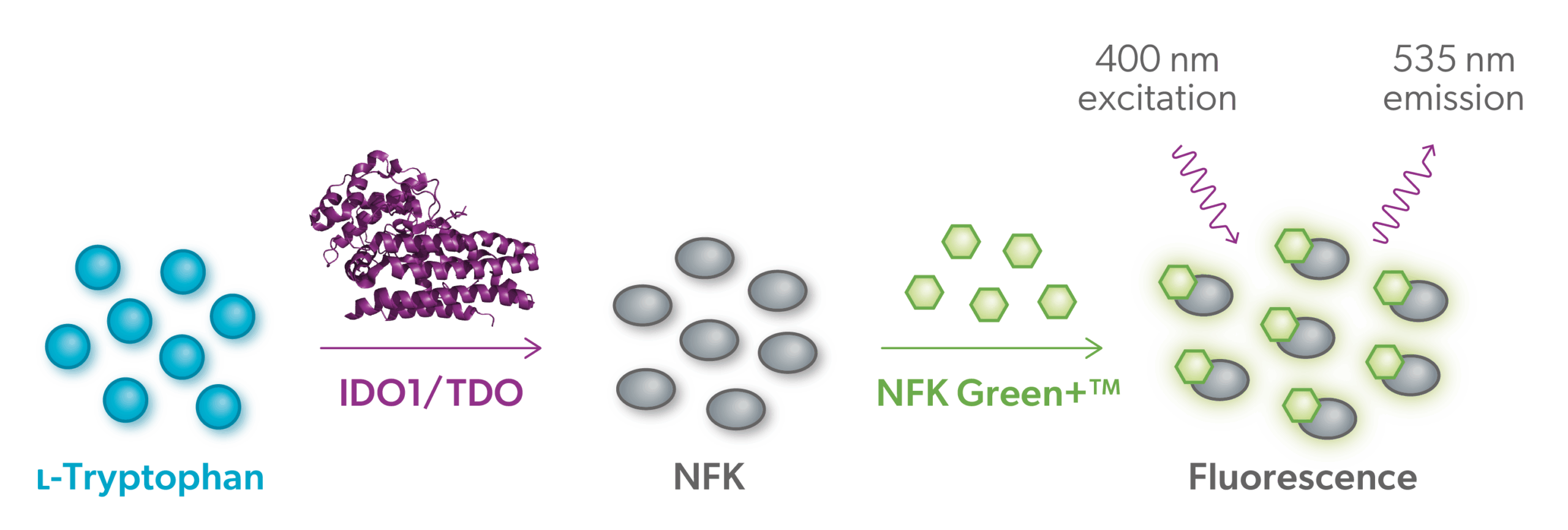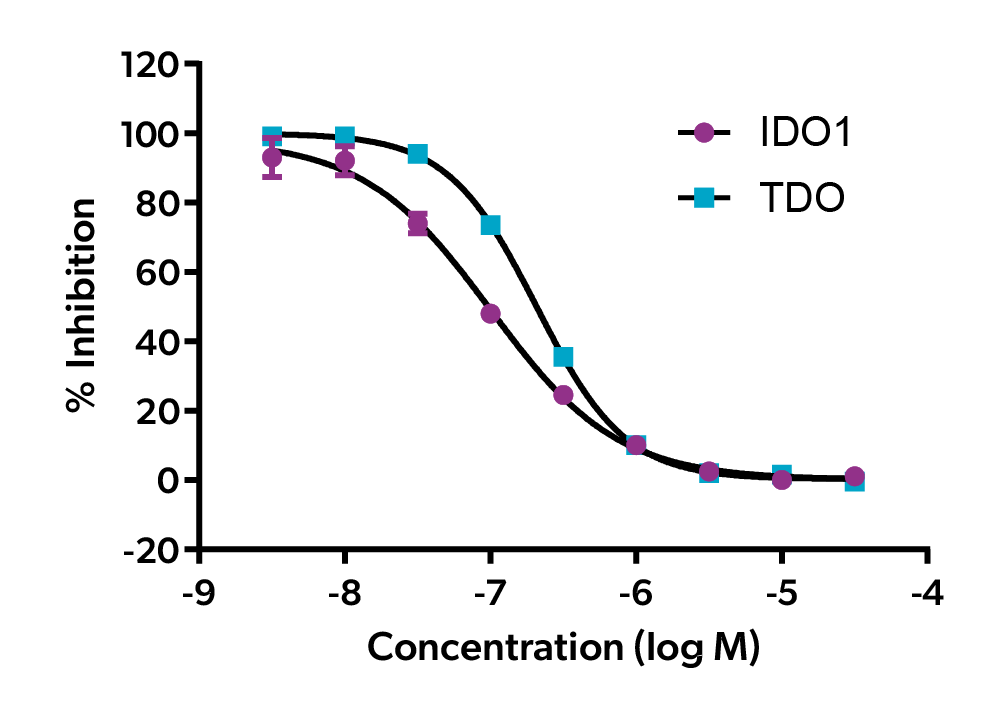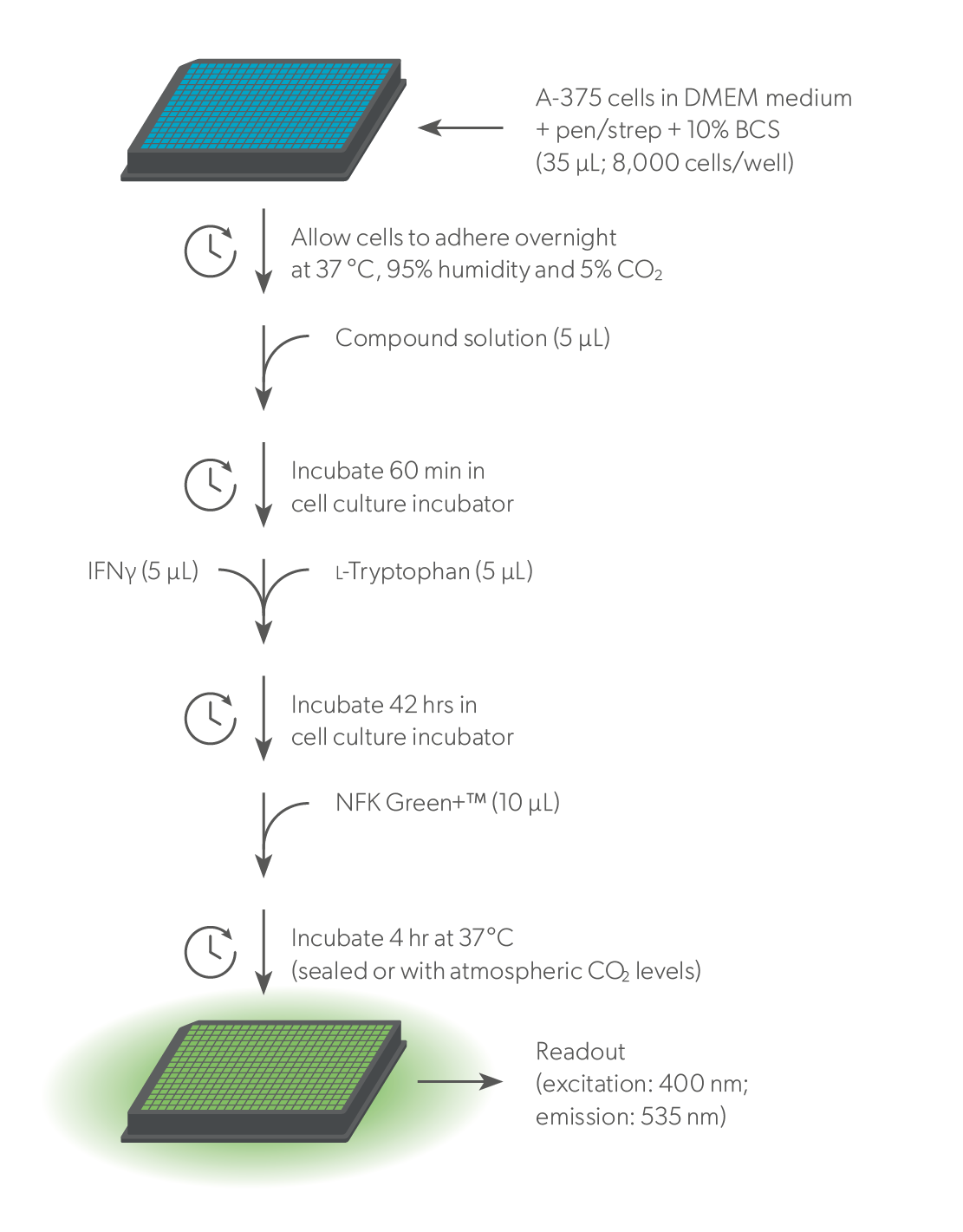Cellular Assay Kit
NFK Green+™ Assay Technology
Indoleamine 2,3-dioxygenase 1 (IDO1) and tryptophan 2,3-dioxygenase (TDO) are enzymes that convert L-tryptophan into NFK, which is the first step in the kynurenine pathway of tryptophan degradation. IDO1 and TDO are important drug target for cancer immunotherapy and neurodegenerative diseases. NFK can form a complex with the chemical probe NFK Green+™ and can thereby be detected in a fluorescence assay. The cellular assay kit can be used to determine the potency of IDO1 and TDO inhibitors in cells that express (one of) these enzymes, such as A-375 or MDA-MB-231 cells for IDO1 and SW48 or A-172 cells for TDO.
Schematic representation of the NFK Green+™ assay principle. L-Tryptophan is converted into NFK by cultured cells, after which the reaction is stopped by addition of NFK Green+™. The resulting fluorescent complex can be detected at the indicated wavelengths.
Note: the NFK Green™ probe was previously provided in this assay kit, which has been replaced by the NFK Green+™ probe to enhance assay performance.
Kits contents
| Component | Description | Stock conc. in kit | Conc. in assay |
|---|---|---|---|
| Substrate | L-Tryptophan | Dry powder | 0.1–1 mM |
| Probe | NFK Green+™ | Ready to use | 1x |
| Reference compound IDO1 | NTRC 3883-0 | 10 mM in 100% DMSO | 10 μM |
| Reference compound TDO | NTRC 3531-0 | 10 mM in 100% DMSO | 10 μM |
Advantages of NFK Green+™
Detection
NFK Green+™ assays can be read out using a fluorescence reader with monochromators or filters that can handle excitation at 400 nm and emission detection at 535 nm. PerkinElmer Envision® multilabel plate readers with 400/25 (excitation; M400w) and 535/25 (emission; M535) filters and the D425/D490 dual mirror have already been successfully used to measure the signal of NFK Green+™ assays in 384-well format.




